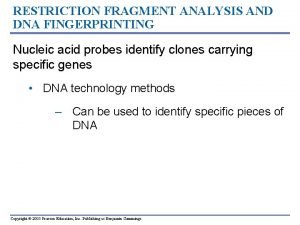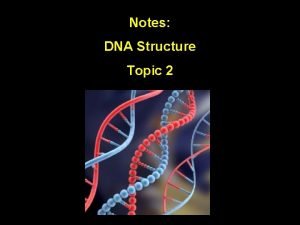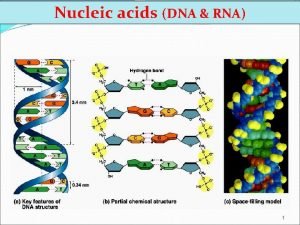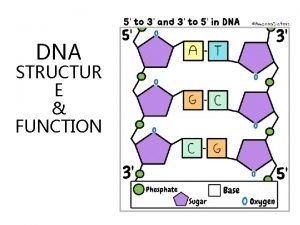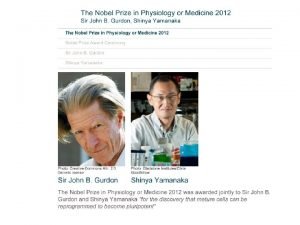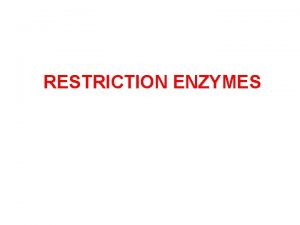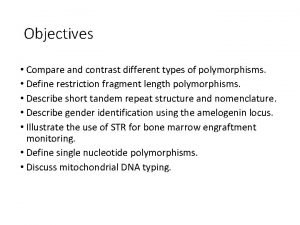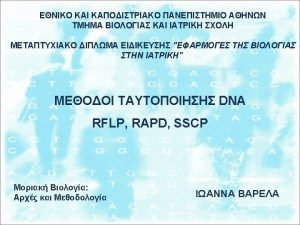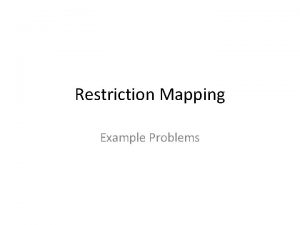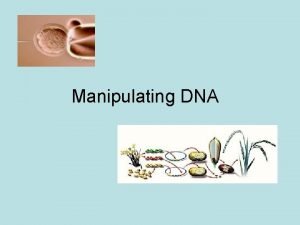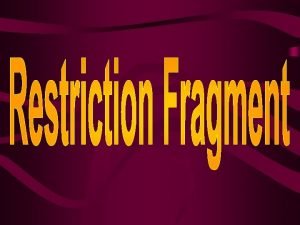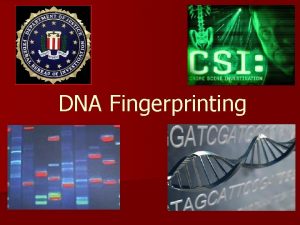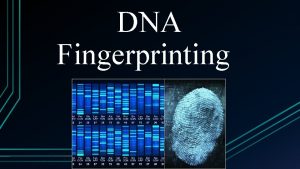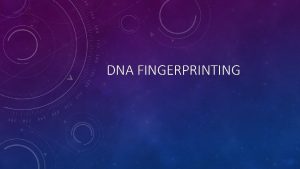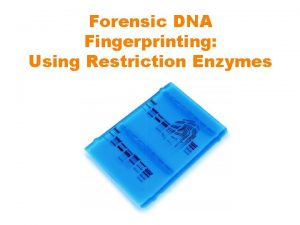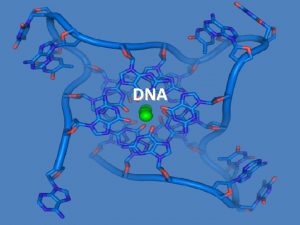RESTRICTION FRAGMENT ANALYSIS AND DNA FINGERPRINTING Nucleic acid











- Slides: 11

RESTRICTION FRAGMENT ANALYSIS AND DNA FINGERPRINTING Nucleic acid probes identify clones carrying specific genes • DNA technology methods – Can be used to identify specific pieces of DNA Copyright © 2005 Pearson Education, Inc. Publishing as Benjamin Cummings

• A nucleic acid probe – Is a short, single-stranded molecule of radioactively labeled or fluorescently labeled DNA or RNA – Can tag a desired gene in a library Radioactive probe (DNA) ATCCGA Mix with singlestranded DNA from various bacterial (or phage) clones Figure 12. 8 Single-stranded G DNA TC A TT C C G G T GC T A A T T C C G A Copyright © 2005 Pearson Education, Inc. Publishing as Benjamin Cummings A A G T G C C TA G G G A C TA A Base pairing indicates the gene of interest

12. 10 Gel electrophoresis sorts DNA molecules by size Mixture of DNA molecules of different sizes – – Longer molecules Power source Gel + Shorter molecules + Figure 12. 10 Copyright © 2005 Pearson Education, Inc. Publishing as Benjamin Cummings Completed gel

Restriction fragment length polymorphisms can be used to detect differences in DNA sequences Copyright © 2005 Pearson Education, Inc. Publishing as Benjamin Cummings

How Restriction Fragments Reflect DNA Sequence • Restriction fragment length polymorphisms (RFLPs) – Reflect differences in the sequences of DNA samples Crime scene Suspect w Cut C C G G G G C C z A C G G T G C C G G C C x Cut y Figure 12. 11 A Copyright © 2005 Pearson Education, Inc. Publishing as Benjamin Cummings Cut y DNA from chromosomes

• After digestion by restriction enzymes – The fragments are run through a gel 1 – 2 Longer fragments z x w Shorter fragments Figure 12. 11 B y + Copyright © 2005 Pearson Education, Inc. Publishing as Benjamin Cummings y

Using DNA Probes to Detect Harmful Alleles • Radioactive probes – Can reveal DNA bands of interest on a gel Copyright © 2005 Pearson Education, Inc. Publishing as Benjamin Cummings

• Detecting a harmful allele using restriction fragment analysis 1 Restriction fragment preparation I II III Restriction fragments 2 Gel electrophoresis I II III 3 Blotting Filter paper 4 Radioactive probe Radioactive, singlestranded DNA (probe) Probe 5 Detection of radioactivity (autoradiography) I II III Film Figure 12. 11 C Copyright © 2005 Pearson Education, Inc. Publishing as Benjamin Cummings I II III

CONNECTION DNA technology is used in courts of law Copyright © 2005 Pearson Education, Inc. Publishing as Benjamin Cummings

• DNA fingerprinting can help solve crimes Defendant’s blood Blood from defendant’s clothes Victim’s blood Figure 12. 12 A Copyright © 2005 Pearson Education, Inc. Publishing as Benjamin Cummings Figure 12. 12 B

The PCR method is used to amplify DNA sequences • The polymerase chain reaction (PCR) – Can be used to clone a small sample of DNA quickly, producing enough copies for analysis Initial DNA segment 1 Figure 12. 14 Copyright © 2005 Pearson Education, Inc. Publishing as Benjamin Cummings 2 4 8 Number of DNA molecules
 Nucleic acid
Nucleic acid Restriction fragment analysis
Restriction fragment analysis Dna molecule diagram labeled
Dna molecule diagram labeled Phosphodiester bonds
Phosphodiester bonds Chargaff's rule
Chargaff's rule Nucleic acid dna structure
Nucleic acid dna structure Gurdon experiment
Gurdon experiment Mechanism of restriction enzyme
Mechanism of restriction enzyme Restriction fragment length polymorphism
Restriction fragment length polymorphism Restriction fragment length polymorphism
Restriction fragment length polymorphism Restriction fragment length polymorphism
Restriction fragment length polymorphism How is selective breeding accomplished
How is selective breeding accomplished
